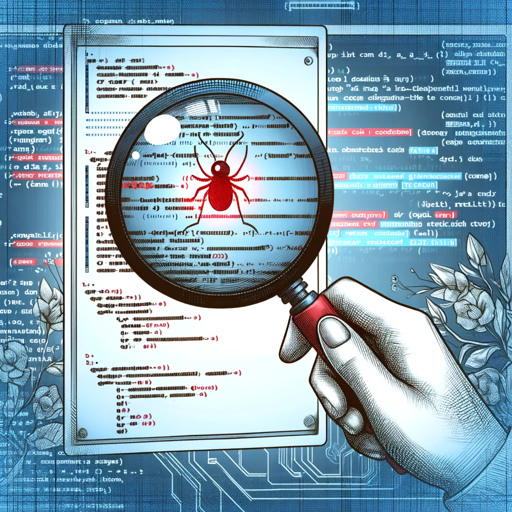QA Tester-QA automation and analytics.
AI-powered software quality assurance.
How do I write effective test cases?
What are the best practices in automated testing?
Can you explain regression testing?
How should I report a bug effectively?
Related Tools
Load More
Software Testing Assistant [Manual/Automation]
Software Test Automation Expert: Ask, Learn, Improve, and Implement. Help transition from manual to automation tester.

Software Testing Mentor
I provide detailed guidance and comprehensive test scenarios for testers.

QA Test Case Generator
Generates happy, negative, edge cases, calls out risks, and mitigation plans for your test cases based on any requirements.
GH QC checker
GH QC checker

Test-Guru
I streamline test planning, turns user stories into SMART test scenarios aligned with ISTQB standards
Quality Assurance Sidekick (QA)
Professional Software Developer in Test, Software Tester, Requirements Engineer and Business Analyst. Detailed advisor in product and project quality. Can help with planning and validating action related to quality topics.
20.0 / 5 (200 votes)
Introduction to QA Tester
A QA (Quality Assurance) Tester is responsible for evaluating and ensuring the quality of software applications before they are released to the public. The primary purpose of a QA Tester is to identify and rectify bugs or issues in the software, ensuring that it meets the required standards and functions as intended. This role involves a variety of tasks, including writing and executing test cases, documenting defects, and collaborating with developers to resolve issues. For example, in a scenario where a new e-commerce website is being launched, a QA Tester would rigorously test all functionalities such as the shopping cart, payment gateway, and user interface to ensure a smooth and error-free user experience.

Main Functions of QA Tester
Test Case Design and Execution
Example
Designing detailed test cases for a mobile banking application.
Scenario
A QA Tester creates test cases to cover all functionalities of the mobile app, including account login, fund transfer, and transaction history. Each test case is then executed to verify that the application behaves as expected under various conditions.
Bug Reporting and Tracking
Example
Using a tool like JIRA to report and track defects found in a software application.
Scenario
During testing of a new feature in a project management tool, the QA Tester finds a bug where task assignments are not saved correctly. The tester reports this issue in JIRA, providing detailed steps to reproduce the bug, screenshots, and severity level, and then tracks the bug until it is resolved by the development team.
Regression Testing
Example
Conducting regression tests after a new update is released.
Scenario
After a software update for a healthcare management system, the QA Tester performs regression testing to ensure that the new changes have not adversely affected existing functionalities such as patient record management and appointment scheduling.
Ideal Users of QA Tester Services
Software Development Teams
Development teams rely on QA Testers to ensure their code is free of defects and meets quality standards before deployment. By identifying bugs early, QA Testers help developers focus on creating robust and reliable software, thus reducing the cost and time associated with post-release bug fixes.
Project Managers
Project managers use QA Tester services to ensure that the project remains on schedule and meets the client’s quality expectations. By integrating QA testing into the development process, project managers can better manage risks and ensure timely delivery of high-quality software products.

How to Use QA Tester
1
Visit aichatonline.org for a free trial without login, also no need for ChatGPT Plus.
2
Familiarize yourself with the interface and available features by exploring the dashboard and tutorials provided.
3
Input your testing requirements, including test cases, scenarios, and any specific criteria you want the QA Tester to focus on.
4
Execute the tests and monitor the progress through real-time reports and analytics available on the platform.
5
Review the detailed test results and feedback, and use the insights to improve and refine your software quality.
Try other advanced and practical GPTs
Peer Academic Review Assistant
AI-Powered Research Paper Review

Computer-Aided Design (CAD)
AI-powered precision in CAD design

دستیار مقاله سئو شده
AI-Powered Persian SEO Content Generator

Abbreviation Glossary
AI-powered abbreviation glossary for research.

Dissertation Helper
AI-powered assistance for dissertation excellence

NestJS Guru
Your AI-powered NestJS and TypeORM expert

Design Sprint Master
AI-powered guidance for effective design sprints

Lotus Ion
Empowering ideas with AI precision.

MJ Stock Images Prompt Generator
Generate AI-powered prompts for stunning images.

GARY
AI-Powered Content Creation and Optimization.

Data Analytics
AI-powered data insights

Quantitative Analysis
AI-powered insights for data-driven decisions

- CI/CD
- Performance Testing
- Integration Testing
- Regression Testing
- Functional Testing
QA Tester Q&A
What is QA Tester?
QA Tester is a tool designed to assist with software quality assurance by automating test case generation, execution, and reporting. It helps identify bugs and issues in software applications efficiently.
How does QA Tester work?
QA Tester works by allowing users to input their testing requirements and scenarios. It then automatically generates and executes test cases, providing detailed reports and analytics on the software's performance and potential issues.
What are the common use cases for QA Tester?
Common use cases include regression testing, functional testing, performance testing, and integration testing. It is also useful for continuous integration and delivery (CI/CD) pipelines.
What are the prerequisites for using QA Tester?
There are no specific prerequisites other than basic knowledge of software testing principles. Users should have a clear understanding of their testing requirements and objectives to make the most of the tool.
Can QA Tester be integrated with other tools?
Yes, QA Tester can be integrated with various CI/CD tools, project management platforms, and bug tracking systems to streamline the testing process and enhance collaboration across teams.